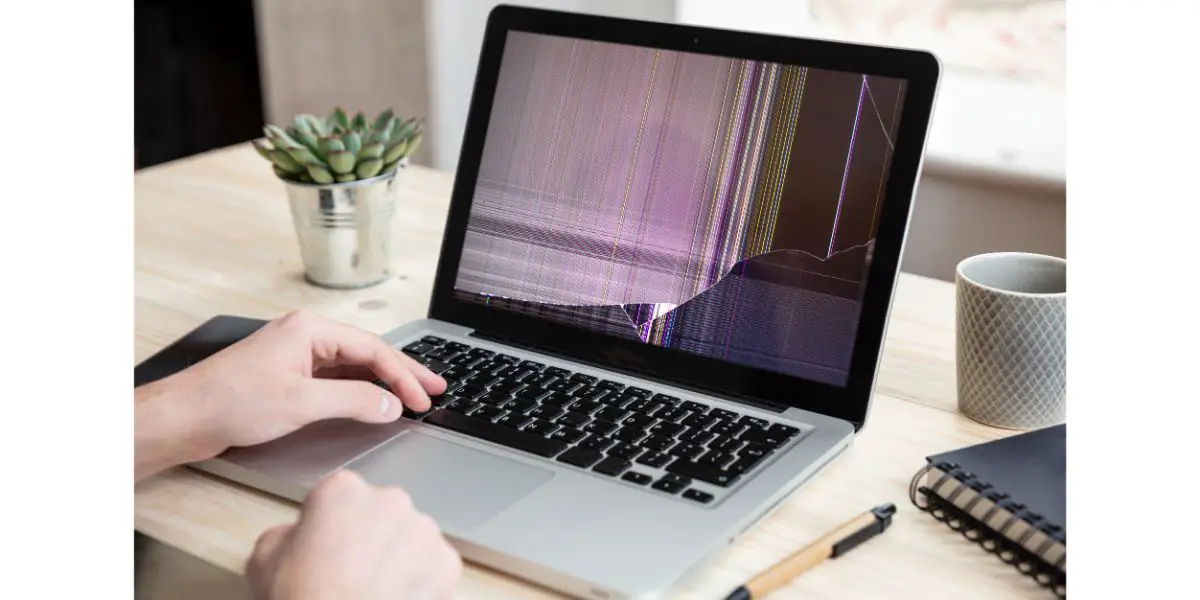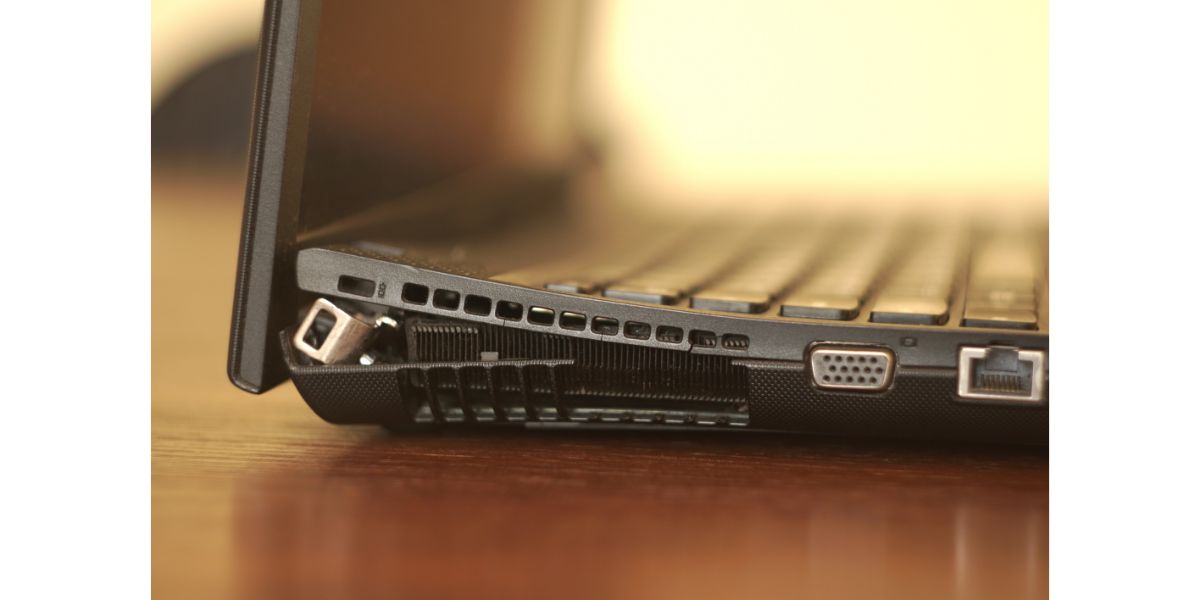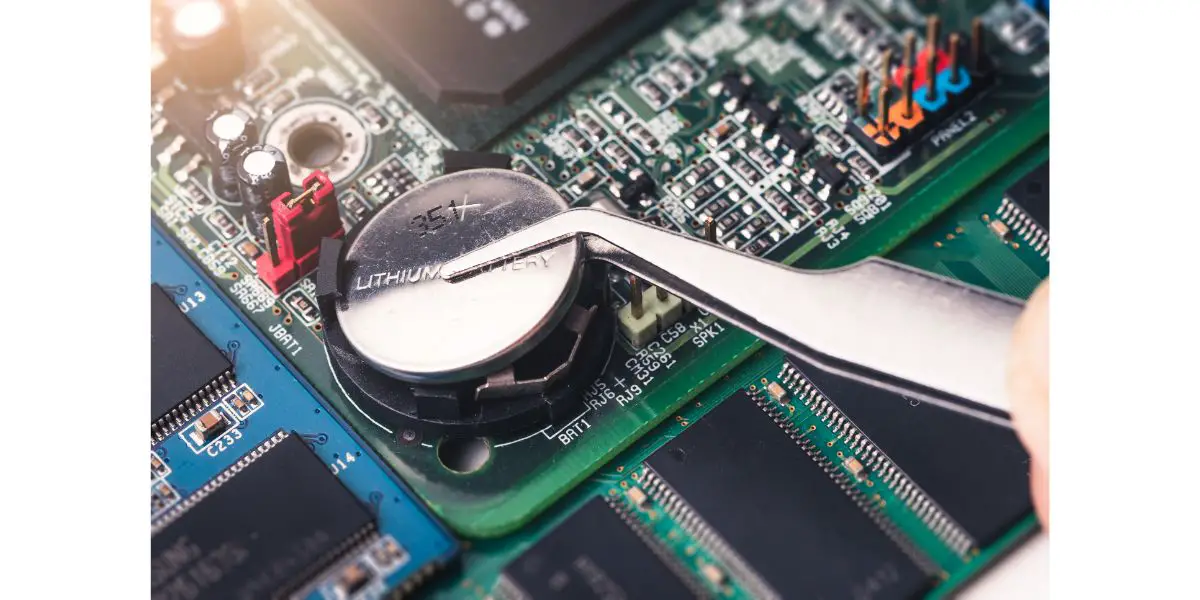Disclaimer: This post may contain affiliate links, meaning we get a small commission if you make a purchase through our links, at no cost to you. For more information, please visit our Disclaimer Page.
The feeling when your laptop slips out of your hands is compatible with when you realize you’ve overslept on the morning of a huge job presentation. To recover from the fall – literally – we’ll need to troubleshoot your laptop to see if it’s fixable at home.
Table of Contents
Is It Under Warranty or a Guarantee?
If a warranty or guarantee covers your laptop, call the provider immediately and resolve the issue through them.
This will enable a professional to inspect and fix your laptop, saving you the headache of troubleshooting, taking it apart, and putting it back together or they’ll replace it. Don’t read any further – you already have the solution to this problem!
When Did You Drop Your Laptop?
If you don’t have a warranty or guarantee, we’re here for you. It’s time to troubleshoot.
If your laptop was turned on when it was dropped, there may be a higher chance of damage. The HDD – the spinning platter where your data is stored – is most at risk. The “head” of this mechanism often rams into the platter and can cause data loss.
The fan is the second component that may have been damaged if you dropped your laptop while it was on. You may hear a noise as if something is loose and bouncing around your laptop if the fan has been displaced.
While you could also damage the HDD or fan if you dropped your laptop while it was off, be on the lookout for screen, RAM, and optical disc drive (ODD) damage or dislodging.
What You’ll Need
Troubleshooting and fixing a laptop that doesn’t turn on is no easy feat. You’ll need a screwdriver to take apart your laptop, a flashlight, a well-lit workspace, and a lot of patience. A solid internet connection to browse for more guidance is also helpful.
Depending on the damage, you may need to replace the fan or CMOS battery. If you aren’t comfortable with any of the following steps, know that there are plenty of professionals in your area who can get the job done for you.
1. Check for External Damage
Right after you’ve dropped your laptop, first inspect it for external damage. If it looks fine on the outside, that isn’t to say that it hasn’t been affected internally.
Even so, a large dent or external damage usually points to further issues inside. Small scratches and scuffs aren’t usually problematic. If you you dropped water on it, it could leave to some big issues.
2. If the Screen Is Damaged
If your screen has a crack in it, is flickering, is half black or white, or shows lines and pixels and your computer doesn’t turn on, you’ll need to take it to a professional.
We do not recommend troubleshooting the computer if the screen is broken or replacing the screen yourself, as this is best done by a professional.
If the screen turns blue or black and does not allow your computer to turn on, follow the next steps.
Blue Screen
Blue screens are commonly caused by the hard drive, RAM, or motherboard issues. The first two items could be worked on at home, but the third requires professional attention.
To test the hard drive, change the hard drive out for another one with an operating system (OS) installed and see if it turns on. If this is the case, you’ll need to format your hard drive using a bootable USB manually to solve the problem.
To test the RAM, first, remove it and reinstall it correctly. Clean your RAM before reinstalling it. Test each port of your RAM. Try using a different RAM on your computer to see if it turns on.
Black Screen
A screen that is on but black has a hardware or software issue. If anything shows on your screen upon booting up, either the RAM is sitting incorrectly or your screen is damaged.
If your screen is black after the Windows logo appears, then you have a software problem. To fix this, press Ctrl + Shift + Esc.
- Select File
- Run New Task
- type in Explorer.exe.
Once you’re back on, you’ll need to reinstall Windows to fix this startup issue.
3. If the Screen Is Off
If your screen seems to be intact and does not show signs of life, we’ll need to inspect the hardware. Unplug your computer, close the screen, and flip it over.
Inspect the Hardware
To take apart the laptop, first, remove the battery. Then, remove the HDD, ODD, and RAM. Some computers will not have an ODD to remove.
Inspect the fan while your computer is being opened. Damage to the fan may be fixable on your own. If you’re confident enough, use the service model for your laptop and reliable video online to replace the fan yourself.
Make sure the RAM is intact and clean and put it back into your laptop. Then, plug in the computer again and try to turn it on. In many cases, RAM can start functioning again after a quick removal and reconnection.
4. Try to Turn the Laptop Back On
If the laptop turns on, it will eventually stop mid-process because there is no HDD; however, it will remain on. This could cue that the issue lies within the HDD.
If you notice HDD damage, you’ll need a professional to fix this. They will save any files they can during the repair.
If your laptop has a faulty video processor, it may beep at startup. This is common with older models and the beep codes can be determined to determine the problem. Look up these beep codes online with your manufacturer.
If your laptop turns on without the HDD and lights the keyboard up, press the F10 key as soon as they light up. Check to see if you can access the BIOS menu screen.
If you don’t see anything on the screen, shine a flashlight on the screen at an angle to see if you can detect any image.
The lack of an image could point to a faulty video cable connection or a faulty display, which is what connects your screen to the motherboard. The issue could lie within the connection on the motherboard, the connection to the display, or the cable between them.
If you do detect an image, you could have a backlight problem. While it may or may not work without your ODD, try plugging in another screen to your laptop to see if the image is projected there.
5. If the Laptop Doesn’t Turn Back On
If there is no sign of life from your laptop after inspecting the hardware, we will try to reset the CMOS battery. This battery powers the BIOS firmware in your laptop.
First, unplug your laptop. Put all of the parts back in your laptop, this time only removing the battery. When you remove the battery, you should be able to see your laptop’s motherboard.
Find the CMOS battery. It looks like a small, shiny coin. It should be in a socket and can slide out in the same way batteries are removed. Note the placement and orientation of the battery and remove it.
Note: Be very careful in this step, as the computer’s motherboard is key to getting your laptop back on. Think of it as brain surgery on your laptop.
Next, home the power button for more than 40 seconds and then release it. Reconnect your CMOS battery and regular battery. Close your laptop and try to turn it back on.
Note: Not all laptops have a CMOS battery. You can read about the purpose of a CMOS battery is here.
6. The Last Resort
If you can’t pinpoint the issue of your dead laptop, it’s time to call in the professionals.
Find a reliable and reputable tech repair shop in your area – preferably one with reviews – and take your laptop in for an inspection. While it may cost you a bit of out of pocket, it could save you the cost of buying a new laptop and, hopefully, even save some of your files.
Below is a video on a man repairing a laptop. Some laptops can be more challenging to repair than others.
Final Thoughts
If you’ve dropped your laptop and it won’t turn on, you’ll need to inspect both the outside and internal components to find out what the problem is. Some parts – like the fan, RAM, or CMOS battery – can be more easily fixed than others, but you always have the option of working with a pro to find a solution in less time.



